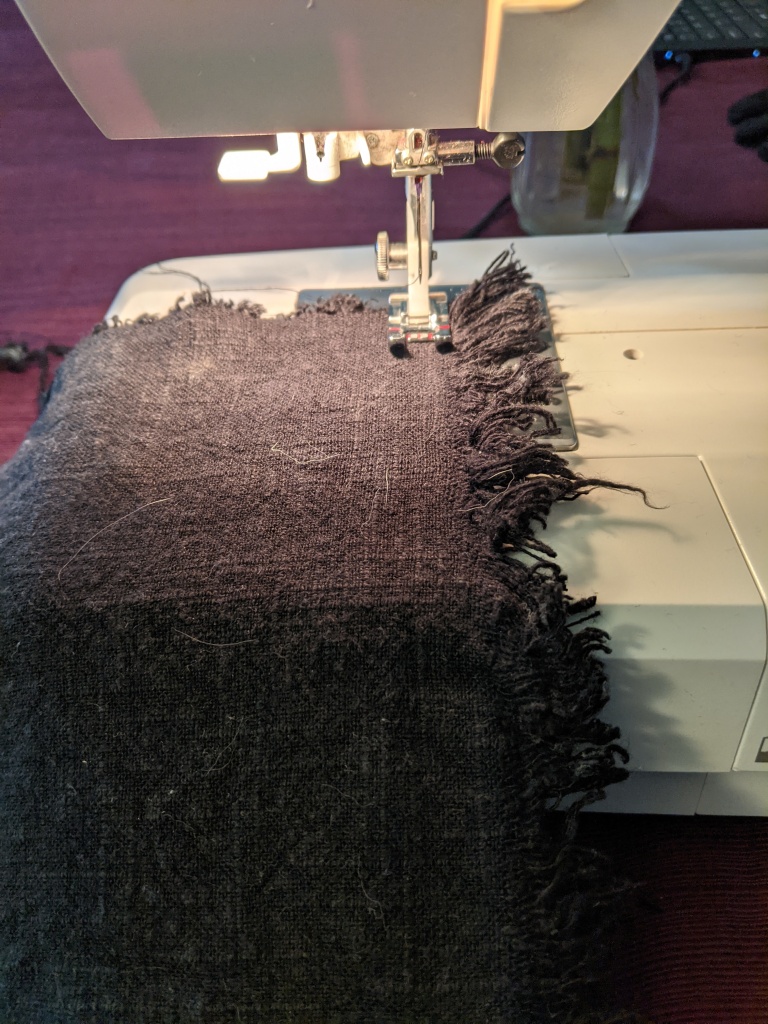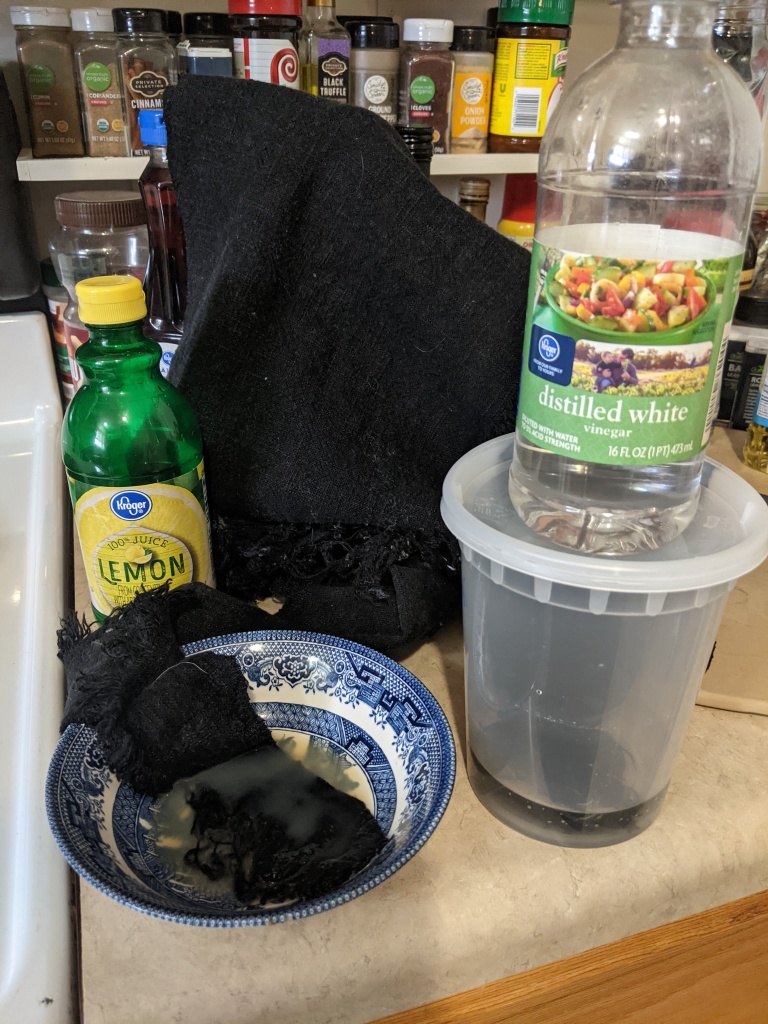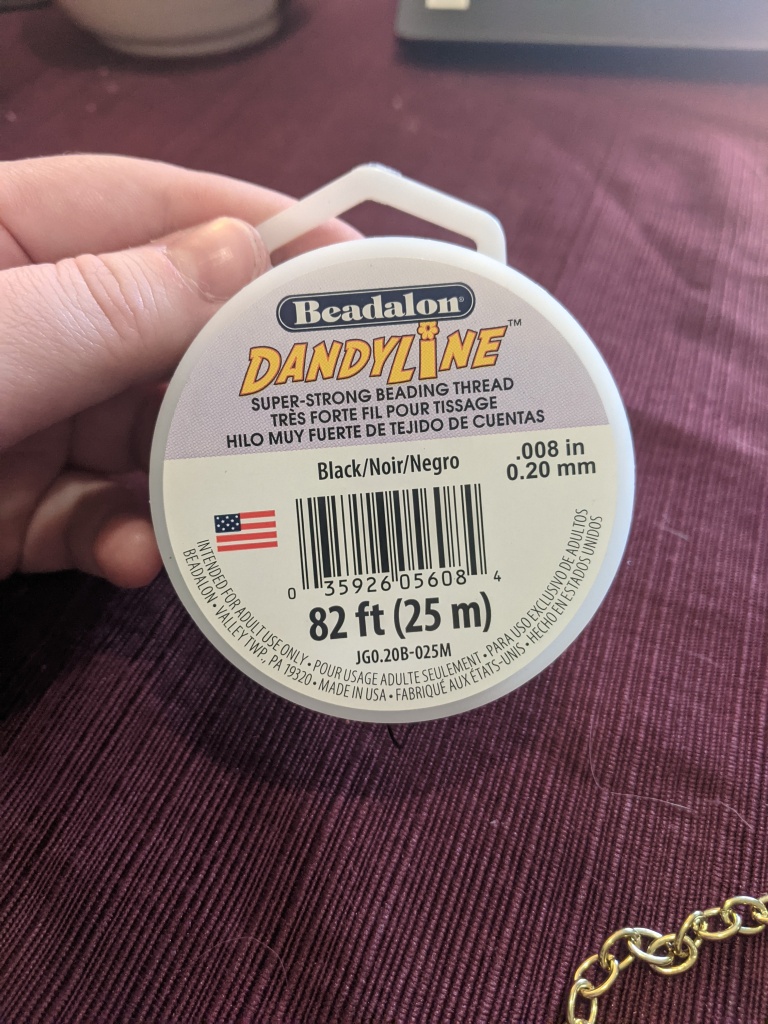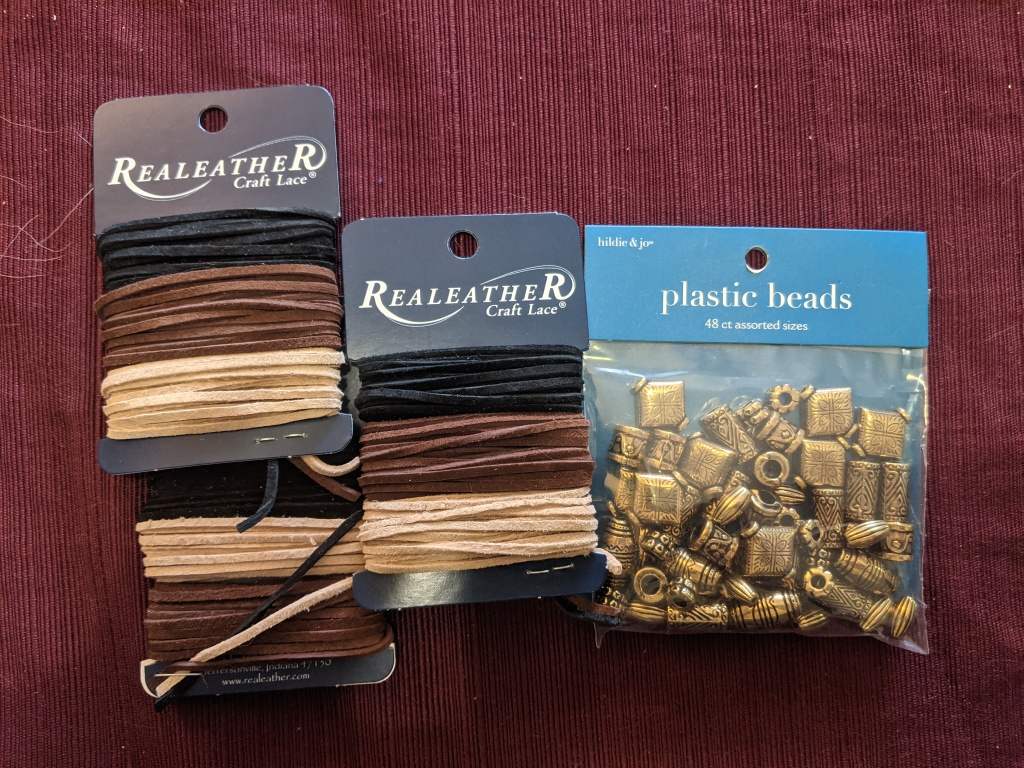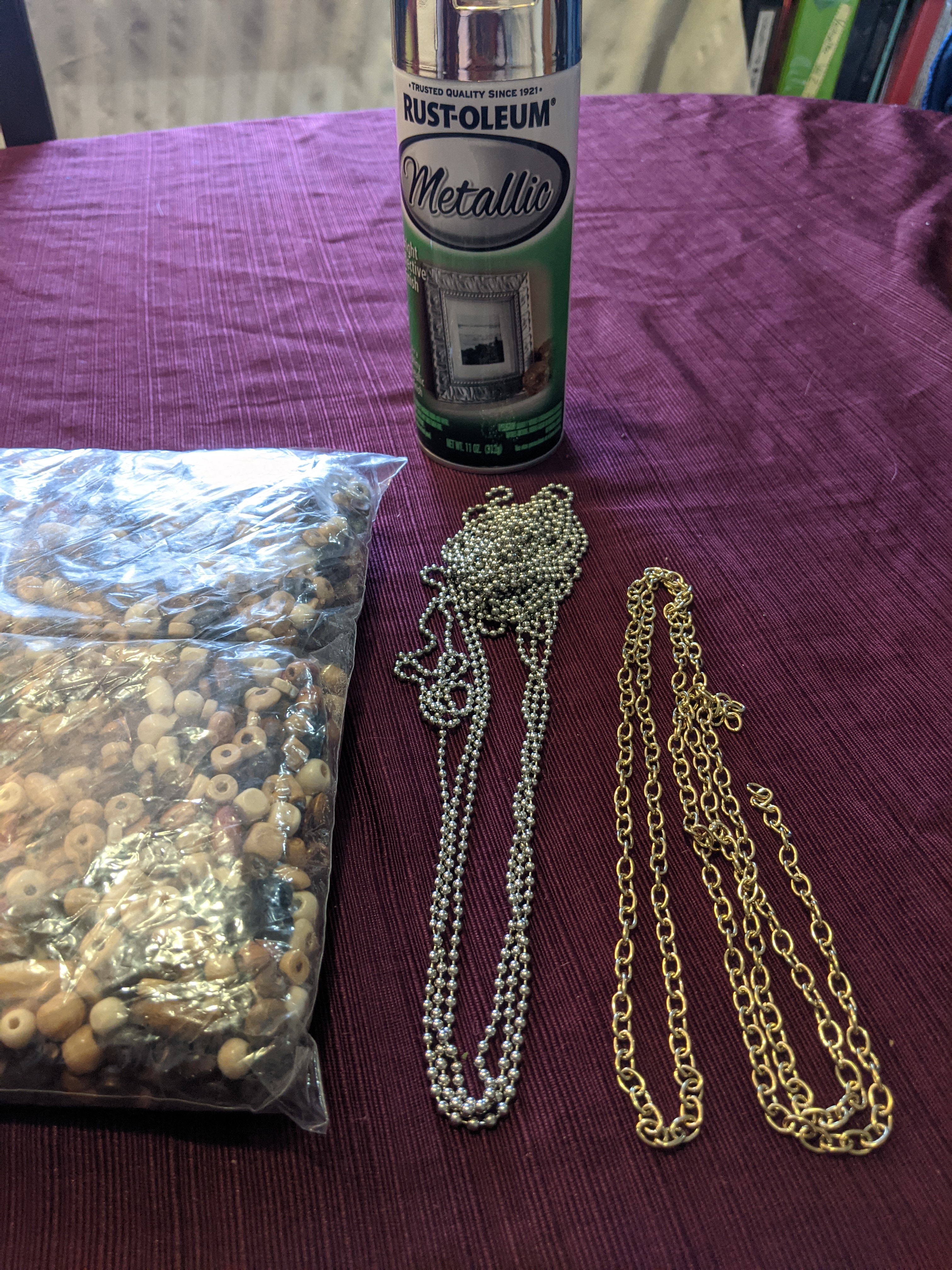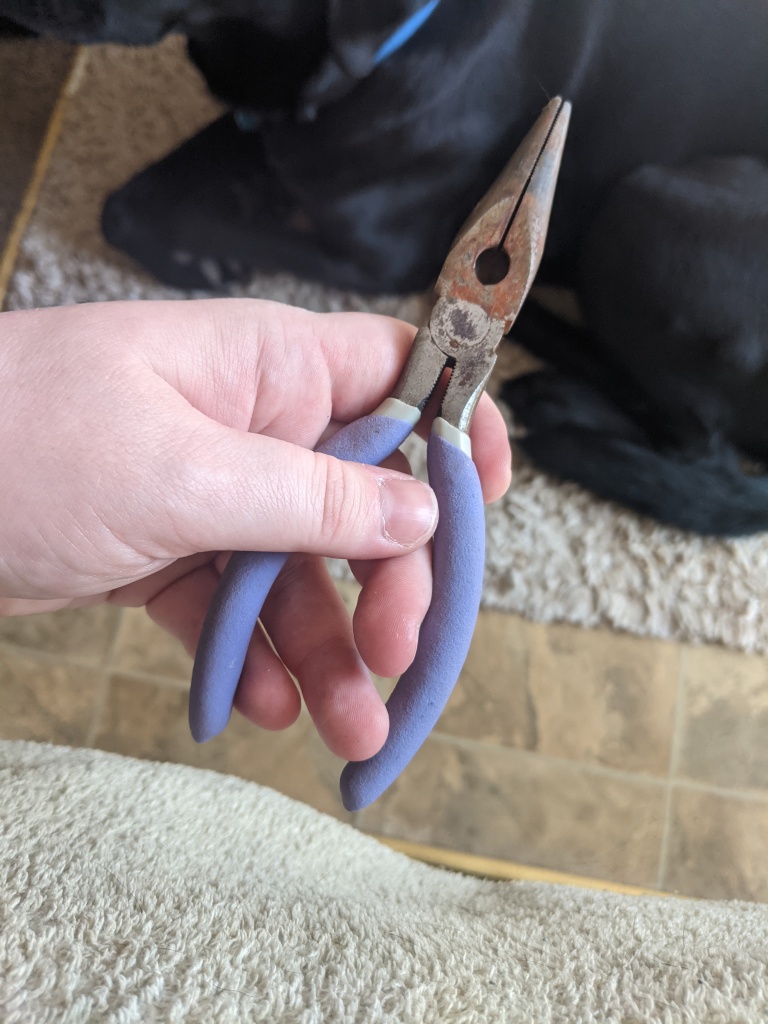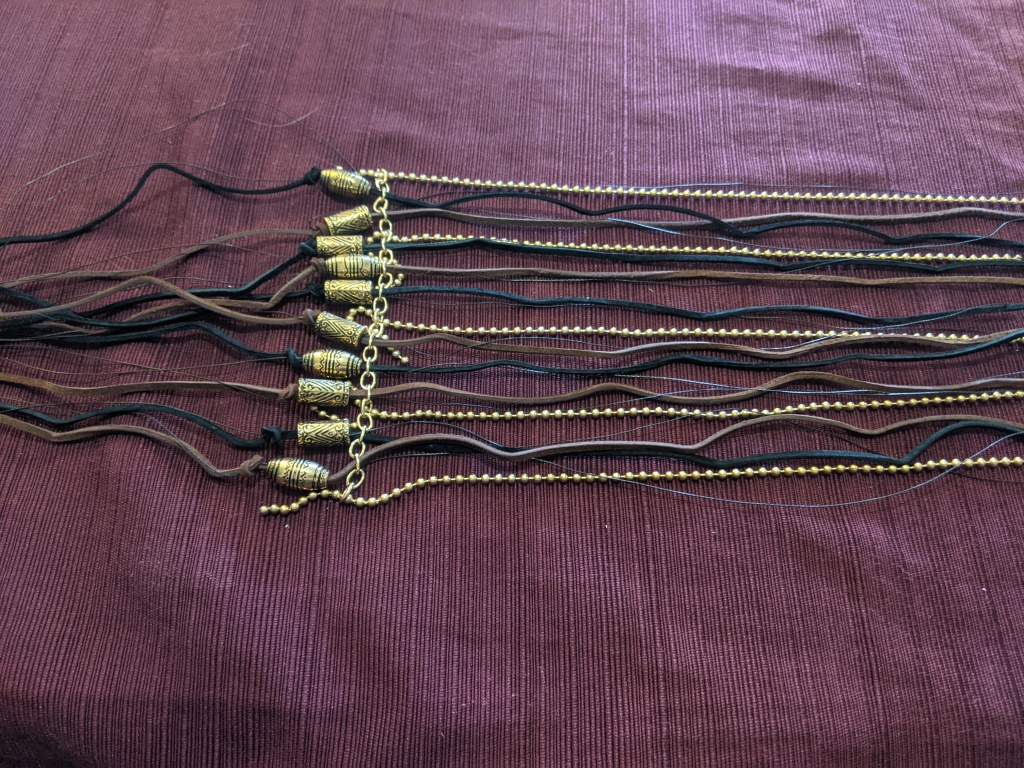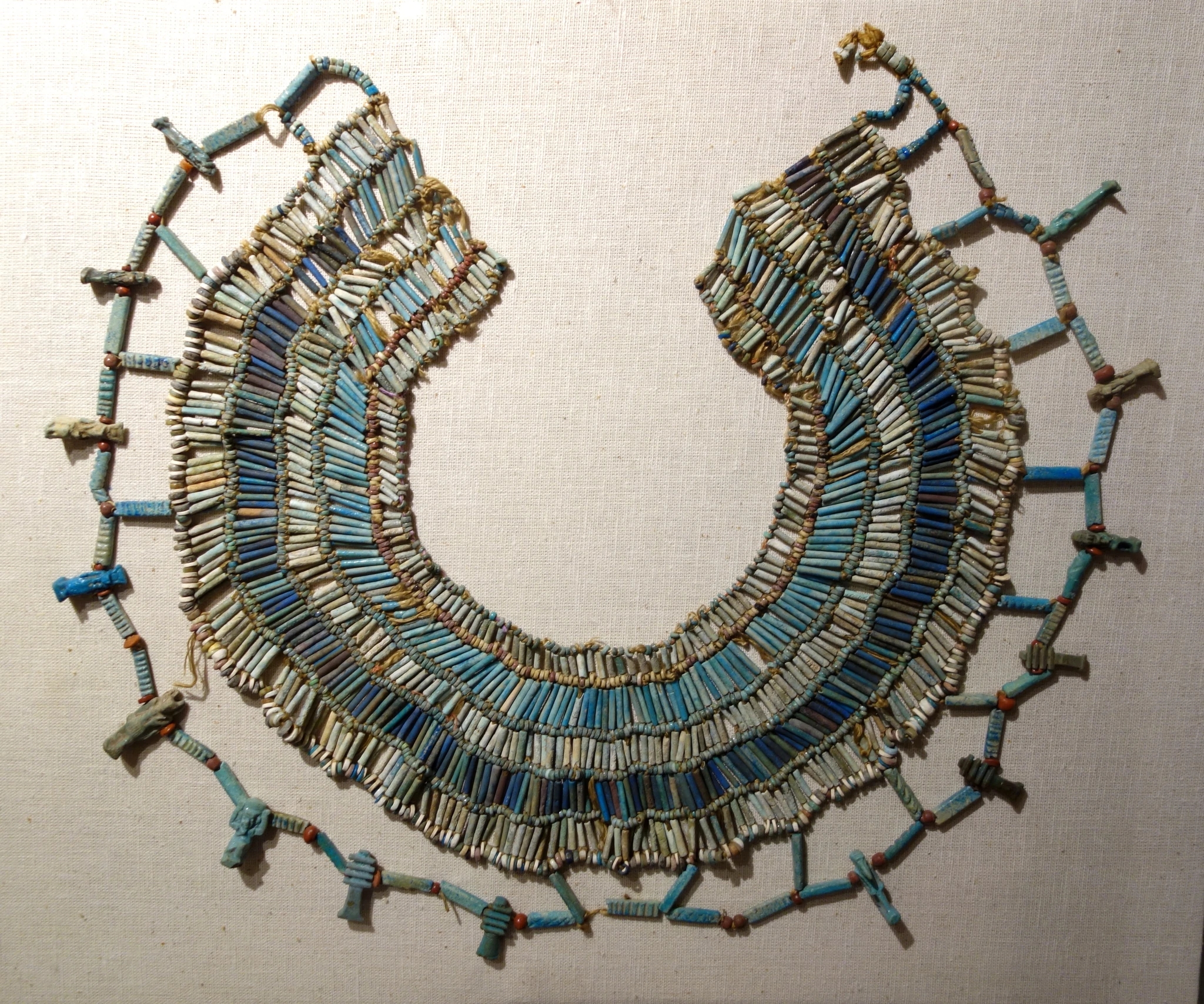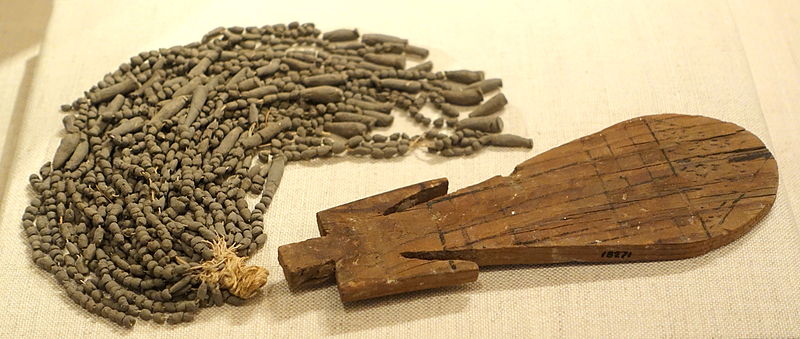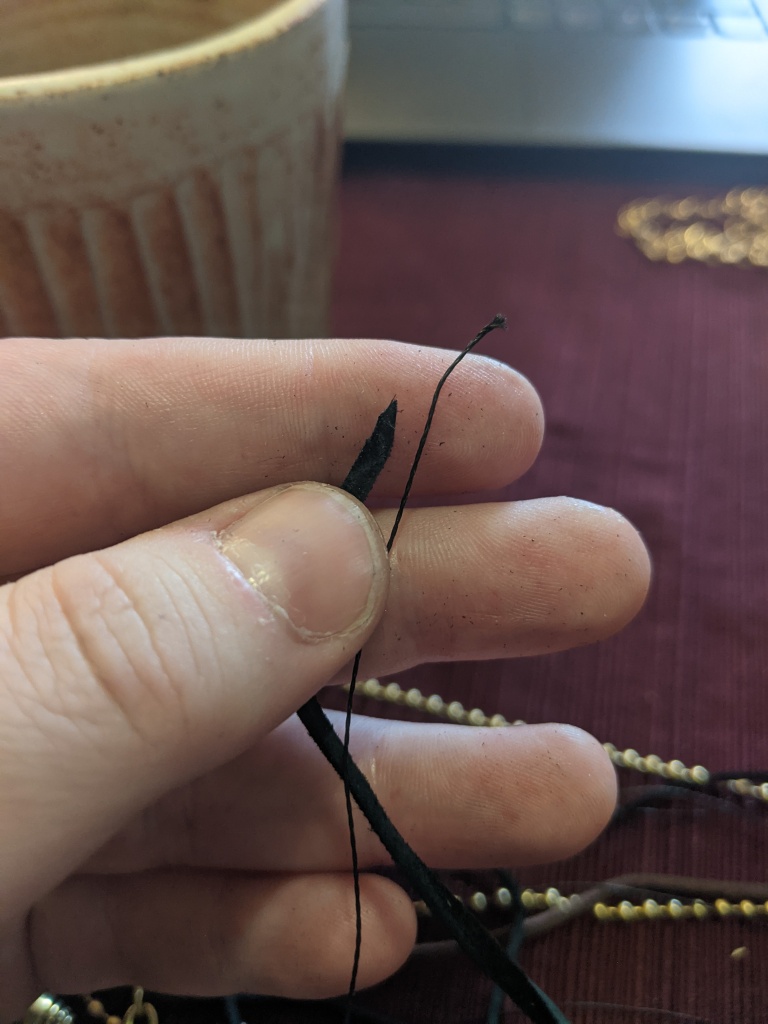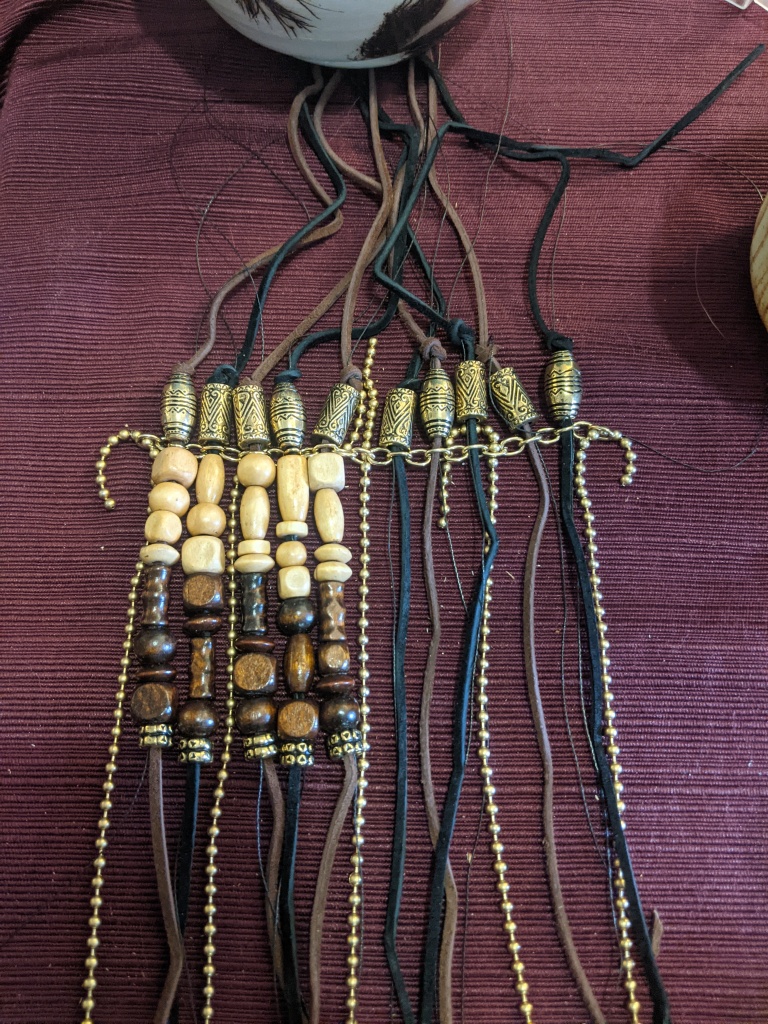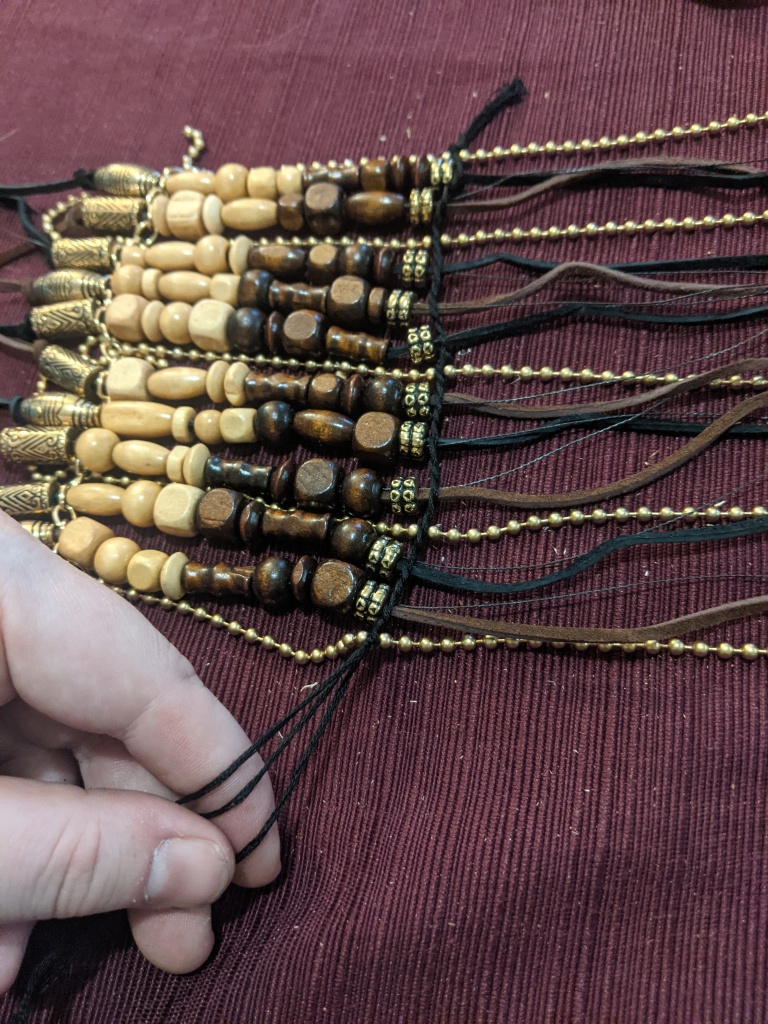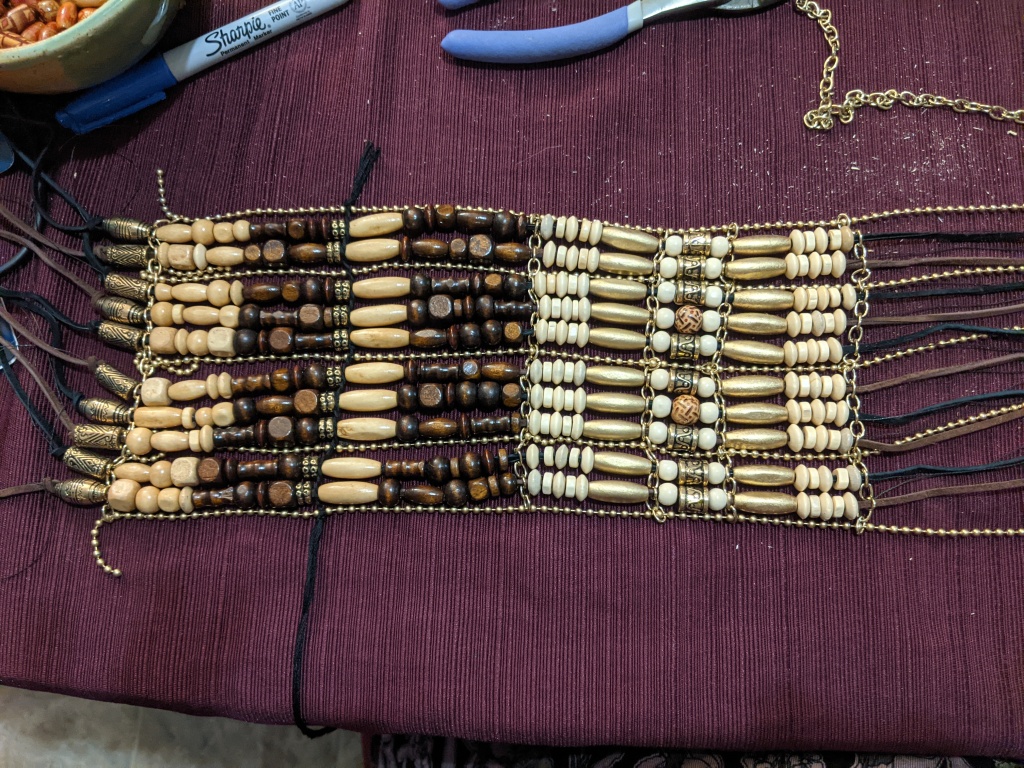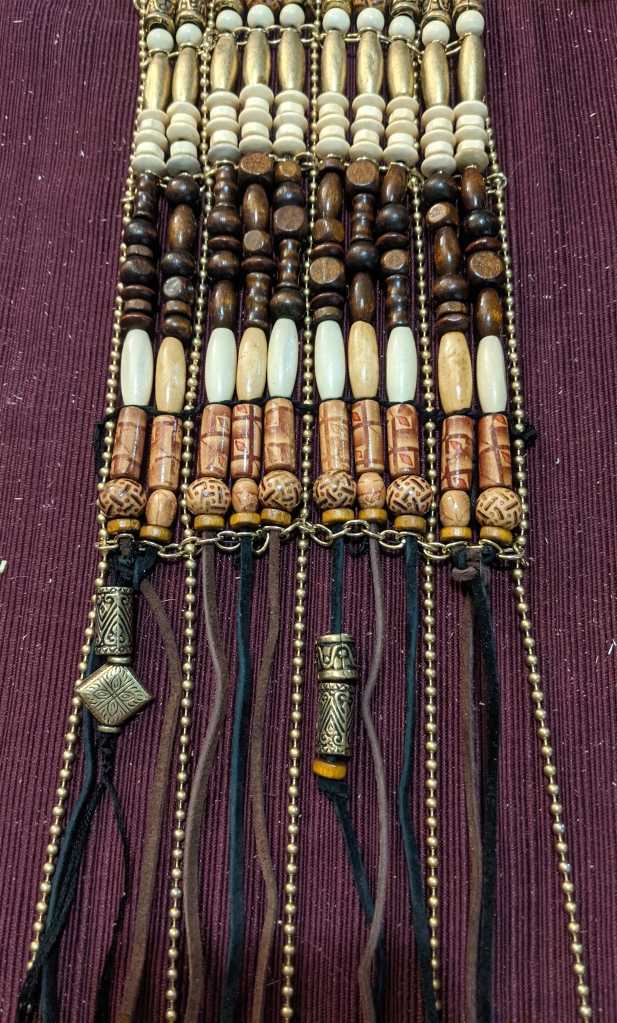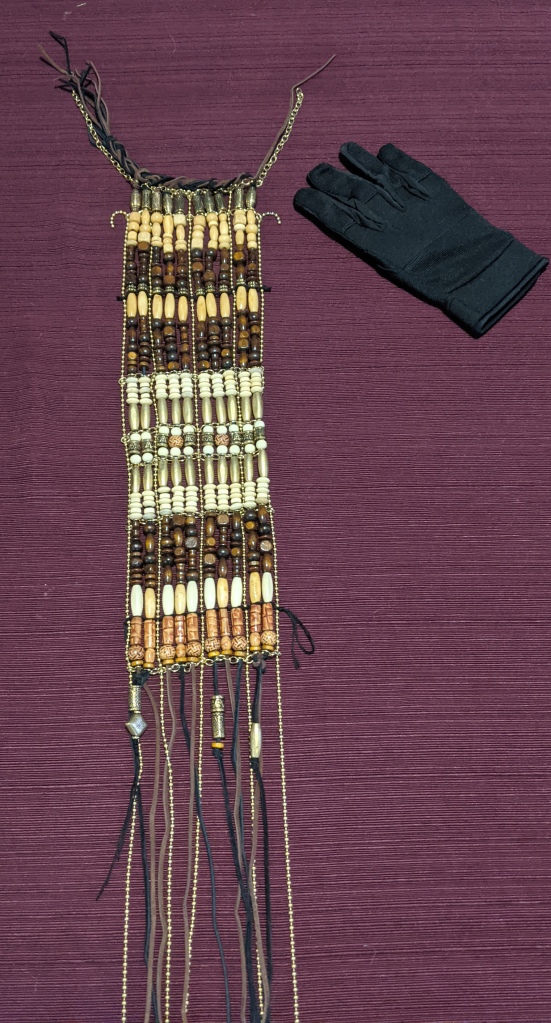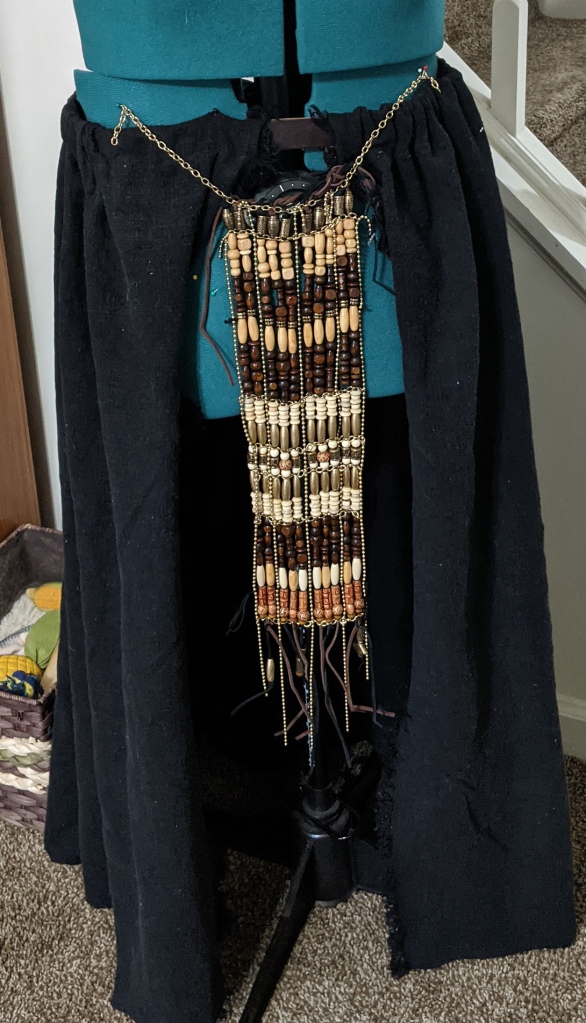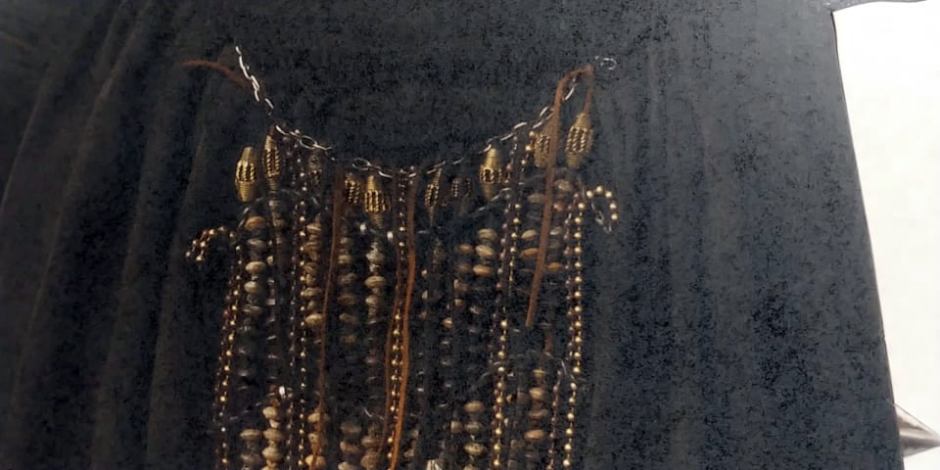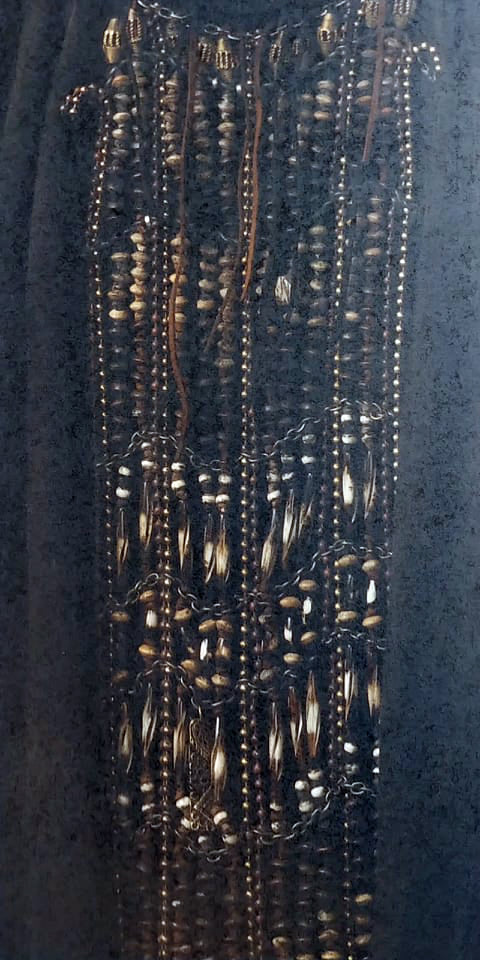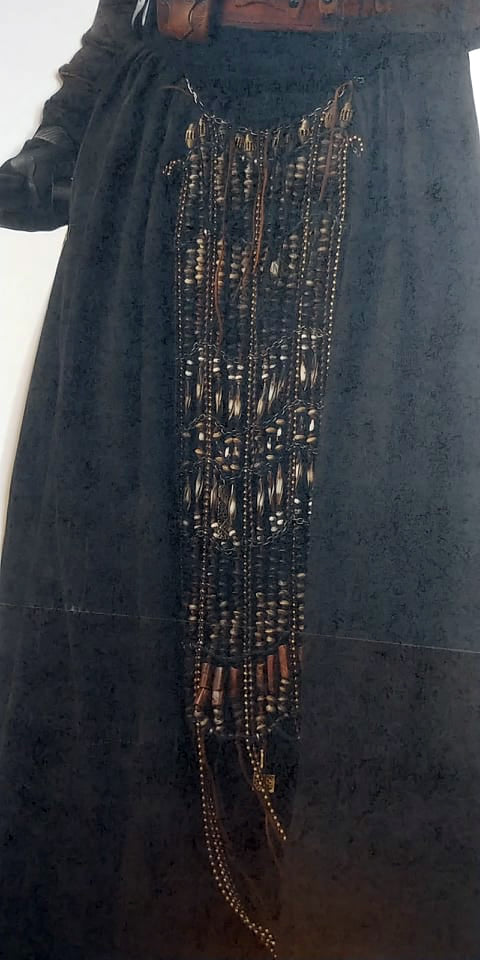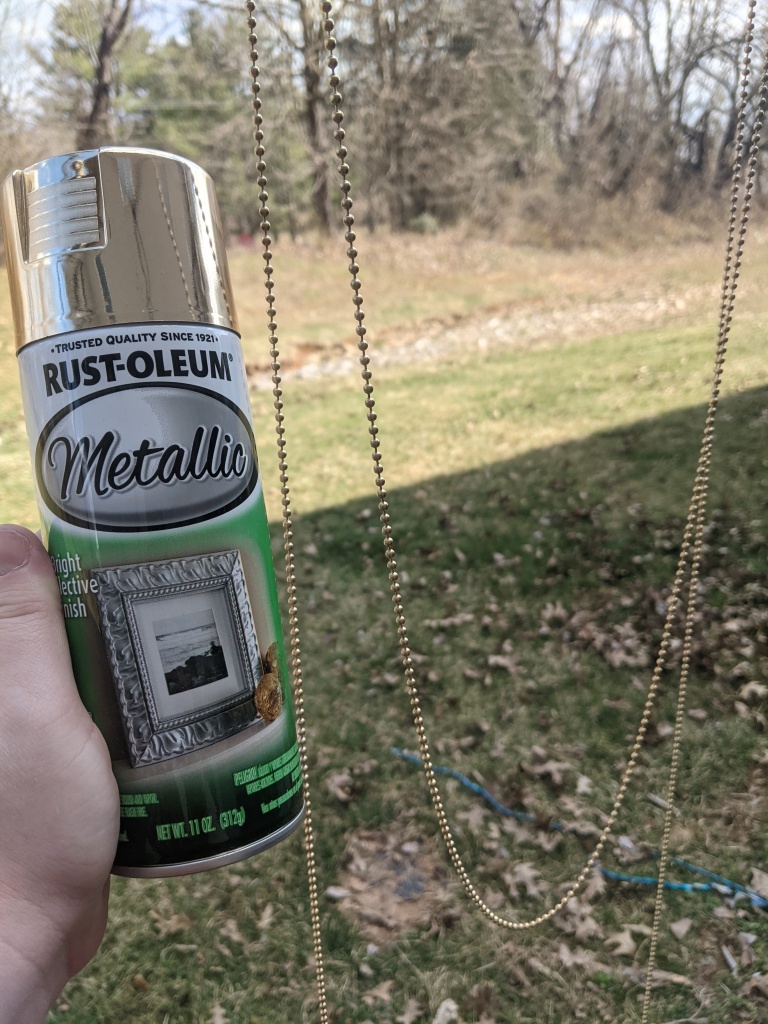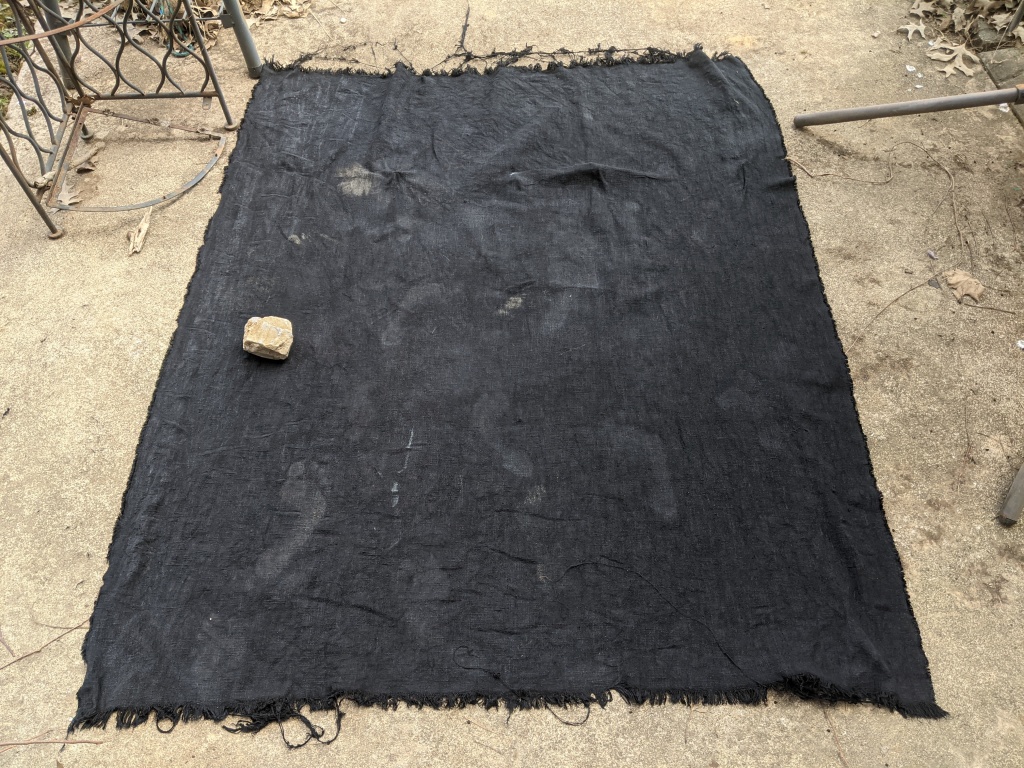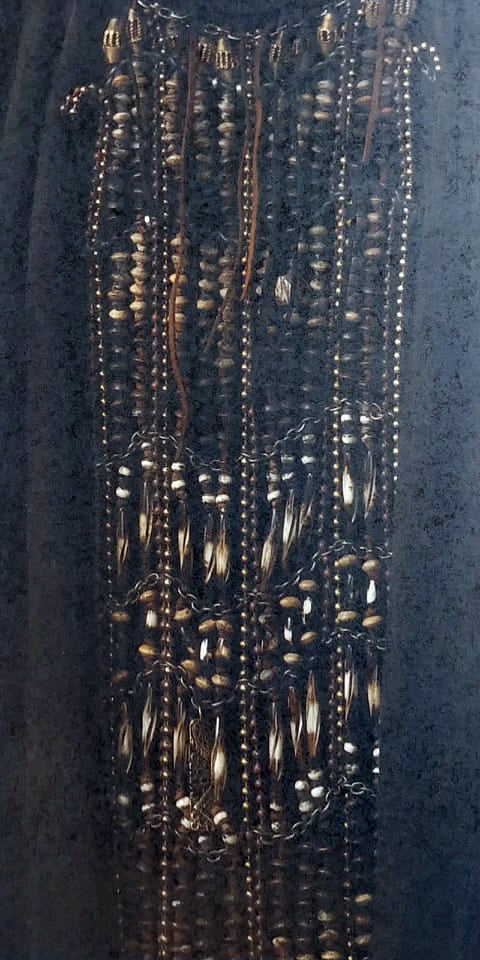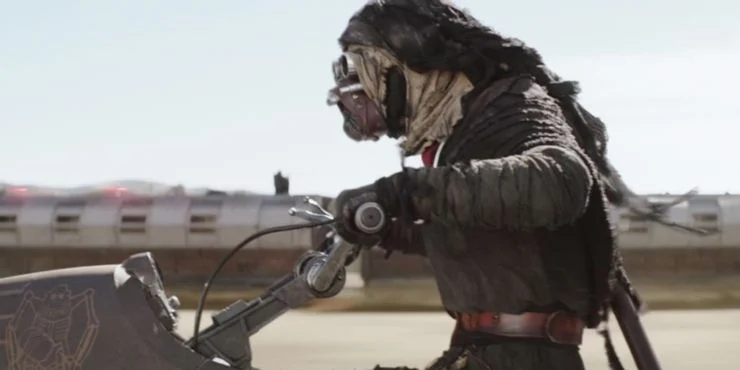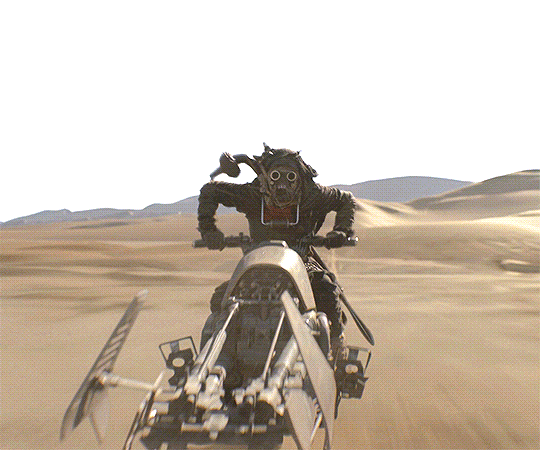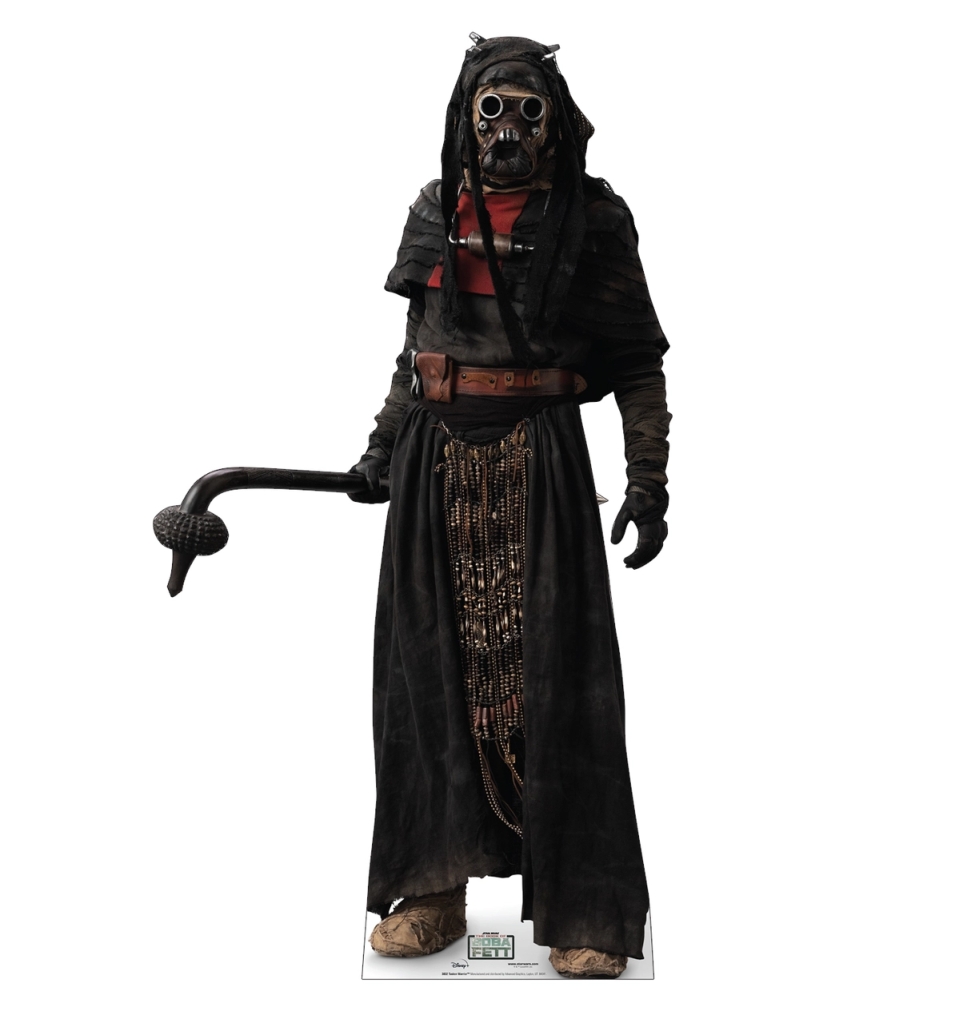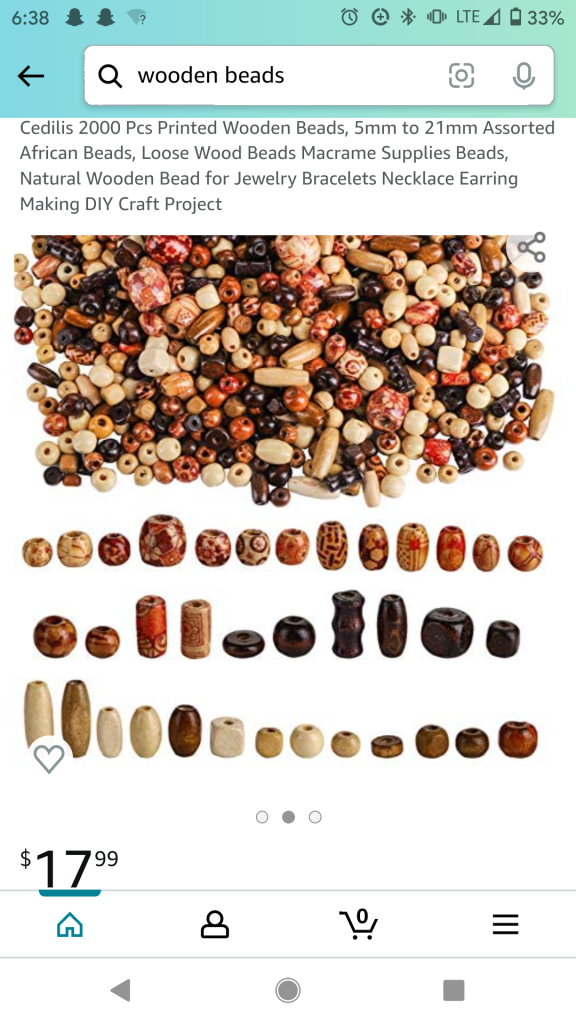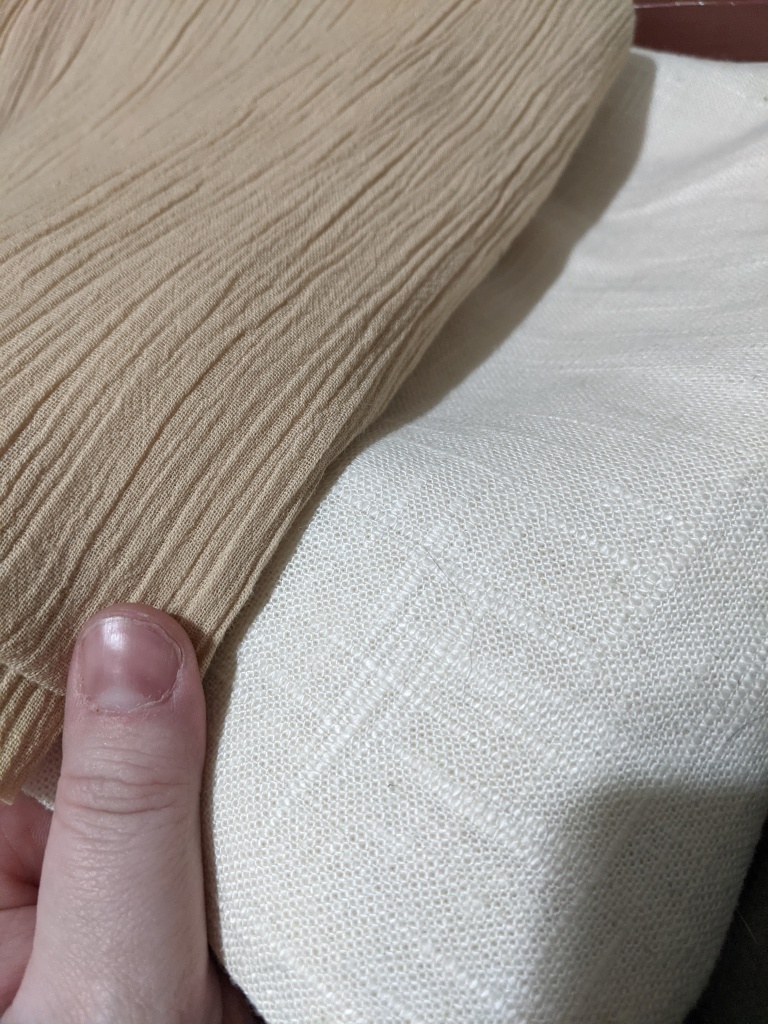With vacation over and the beaded apron mostly complete, I can take a step back somewhat and focus on what I know best – actually sewing. I figured I’d work my way from the steps I believe might be the easiest to those that might take the longest. So because of that, we begin with the overskirt.
I’ve done a *little* bit of weathering … just enough to begin breaking down the harshness of the fibers and start making it a lot softer. Please note that I’ve *never* weathered anything for cosplay or costuming purposes before and by the end of this post you’ll see that that’s what I have to do next for pretty much every step. So I can’t delay it anymore, and that’s what my next entry will be about.
For now though, it’s the comfort zone for me.
Our Tusken Warrior here has an overskirt that wraps most of the way around her body and opens in the front to show off her pants.
Sidenote, this is also a great shot of where the apron should fall! Just at the boot top. I also appreciate that you can see the apron’s vertical asymmetry in this angle. Now that I have my own apron hanging on my dress form, I’ve been second guessing whether or not I should have added a second row of darker beads toward the bottom (just above the red painted row). But this photo is a good reassurance that …. no, her’s is exactly the same, it doesn’t have to be perfectly symmetrical.
Either way, I have one question about the skirt that I’ve yet to figure out. It will be an easy one once we get more high res images, but for now: is the skirt attached to the apron, or are they separate pieces? Look at the below photo for what I mean:
It looks like the apron COULD be attached to the same waistband that the overskirt is attached to:
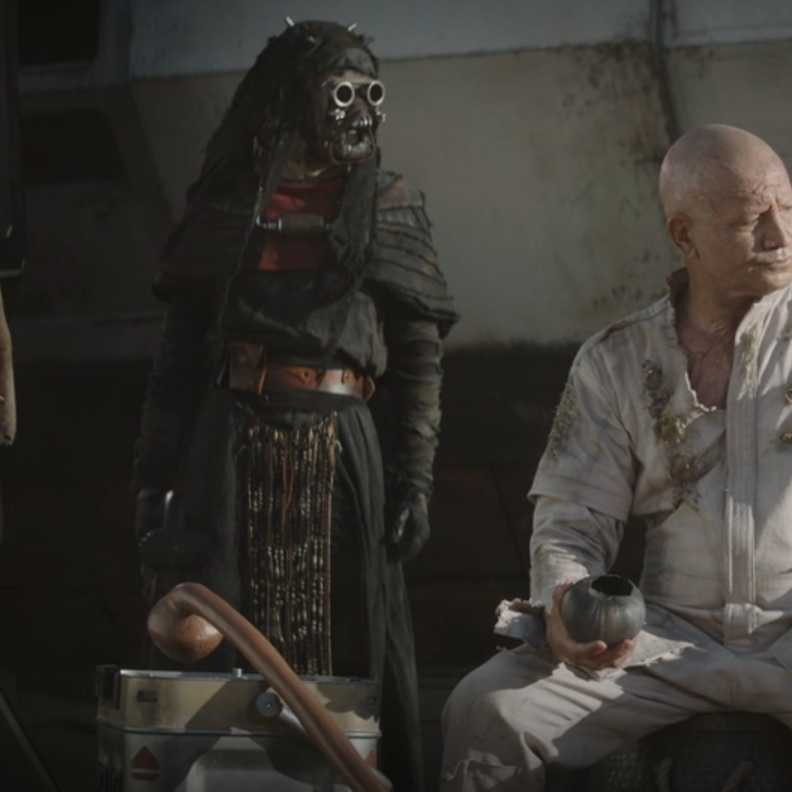

On one hand, this would give a consistency to her look. People on set would not have to constantly adjust where her skirt was sitting in relation to her apron. She could also adjust her costume between action filled sequences by just making sure the apron was front and center … and know that the rest was in place.
On the other hand, look at how it’s sagging. If it was attached to the skirt, there might be another waistband higher up that both the skirt and the apron are attached to, instead of the apron itself being part of the waistband.
Separate pieces, however, would let her adjust the skirt and apron individually, as well as provide for an easier time if one of them broke or ripped. Personally, I am going to be insanely paranoid the first few times I wear this thing that one of my beading strands is going to snap or something in the apron is going to fall apart (even though we’ve seen over the past posts how devilishly sturdy this thing is). If one part broke or ripped, I would rather be able to take one off to fix it than have to take both off to fix.
UPDATE: Well, someone else has just now suggested to me that it might not be a skirt at all, but a dress that’s been cut up the front and whose waistline is hidden undern an obi style fabric under her belt. Well. Shoot. That looks like EXACTLY what this could be.
Granted, the 501st’s CRL on female Tusken outfits lump “dress/inner robe” into one category. So I guess they could be separate. But I like combining them to get rid of the waist bulk that the skirt’s waistband would cause. I particularly like this image taken by J.L. Ramsaur Photography (right).
Just like our bobf warrior, the sleeves and skirt in this outfit match each other. Obviously we can’t see a waistband or belt in this image, but making it a dress of sorts would make the whole thing easier to wear, easier to move in, and would keep sand at least a little more at bay.
*SIGHS DEEPLY* I guess I could make that modification! I already had this whole part done, lol. Well. I guess I’ll be presenting TWO WAYS to make this piece.
BUT FOR NOW, we’ll focus on how I put together my original take on this.
I knew I wanted a front opening skirt with a back closure. The star of the outfit’s front is the apron, and it shouldn’t be overshadowed by a drawstring or something. I also knew that I’m FINALLY starting thyroid meds soon (yay!) and might be losing a crap ton of weight, so I want this to be adjustable to my size.
I also knew that the Tuskens weren’t going to be cutting fancy skirt shapes. I have a wide rectangle of the skirt fabric and a smaller remnant piece that I bought. I folded the remnant in half and cut a triangle.


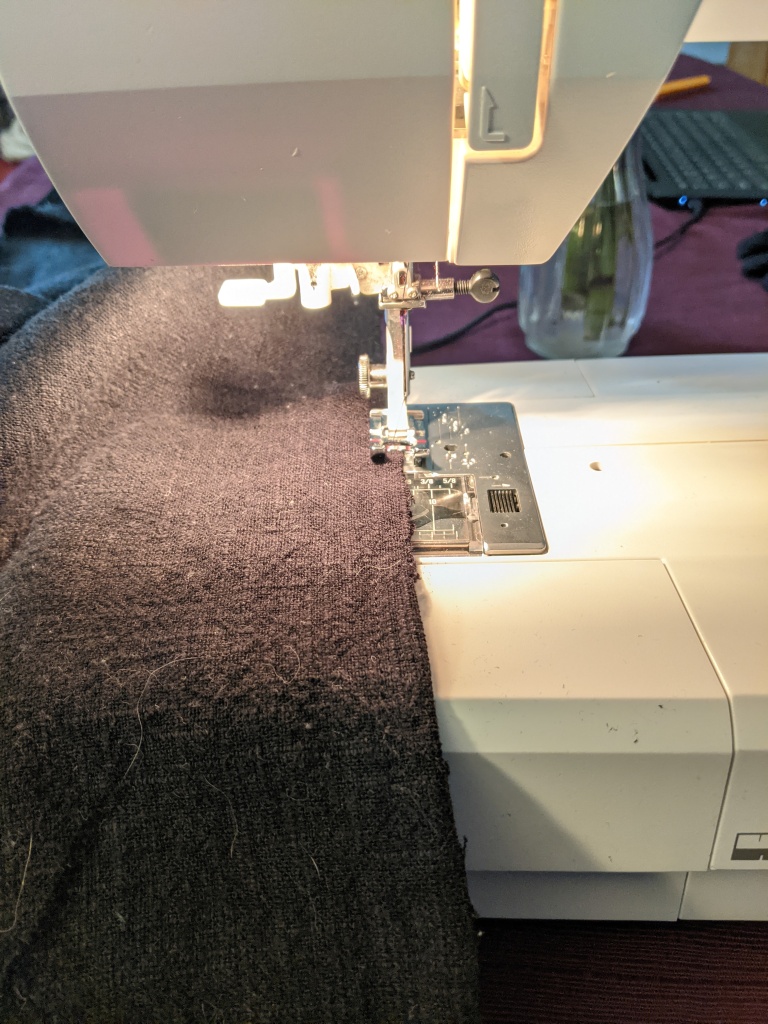
I forgot to take pictures of how I put this together, so I drew out the steps. Cut the wide rectangle in half, insert the triangle, and stitch back up like so:
DO NOT. FORGET. TO ZIGZAG YOUR SEAMS. Or serge them if you’re fancy and have invested in a serger. Tusken fabric is going to fray at every edge, and we just don’t want to deal with any of that on the insides of our costume. Don’t just use fray check or glue, that’ll just make it more stiff and scratchy along the seams. Please promise me you’ll zigzag inside!
For the back closure, I made a cut (I just realized I didn’t measure it — it’s probably 6″ – 7″?) and then stitched it down in a hem. I then folded down the top of the skirt and made a channel along each side of the skirt top.
Because this fabric is so easy to work into place, I was able to tuck the edge into the drawstring channel without even any ironing or stay stitching (see right photo below):

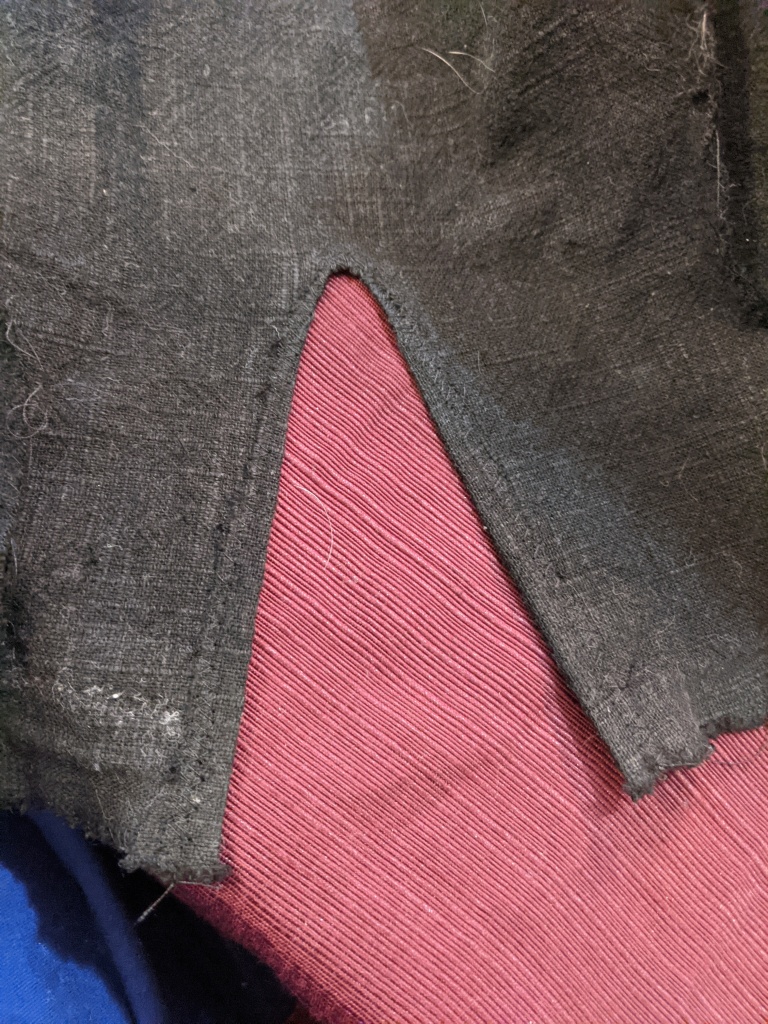

I couldn’t find a cord offhand that could be used as a drawstring, so I just threaded one of my belts through the channel and popped it on my dressform that way.
I hung the whole thing on my dressform, put the dressform up on my table, and cut the hem to where the top of my toe would be in the boots. **DO NOT LEAVE HEM ALLOWANCE**. You will not be hemming this piece! You will instead be cutting this to exactly the length you wish to have the skirt, plus a little fraying.
Again, I forgot to take a picture, but here’s a historical image showing how to not ruin your back (like I did for years by sitting on the floor) while cutting and working on hems and dress bottoms. If this is how the ladies of Paris’ House of Worth did their skirt bottom detailwork, it’s good enough for us!


For the bottom, I threw the finished piece through the wash to let it fray, then stitched a single straight line across the hem area above the frayed bit. This will prevent fraying above the stitch line. Do this also up the sides. We will be doing this anywhere there is an exposed edge!
For now, this is how I’m choosing to do my overskirt.
If you wish instead to use the dress method, you have a few options. One is to make a tunic and just cut a rectangle out of the front.
Another maybe thriftier way is what I may end up doing depending on how my current build works out: just attach the skirt you’ve made to a turtleneck. Again, leaving a gap in the front, so that the final product looks like this (left).
I have no idea if I’m going to attach them or not. I think it depends on how much bulk I end up having at my waist when this is all done. If I want to reduce the bulk, I’ll make it all into one piece. We’ll see.
I’ll do the start of the capelet in the next post! But I really *really* need to figure out how I want to weather this stuff. I’ve got test swatches soaking in lemon juice and in white vinegar right now to see what both look like because I had both lying around the house. But honestly? I’m probably going to end up just going and buying some bleach at some point. Also, keep your vinegar soak either in a well ventilated area! I think containing it like this is safe too, but don’t quote me. Probably should have looked that up before starting …






